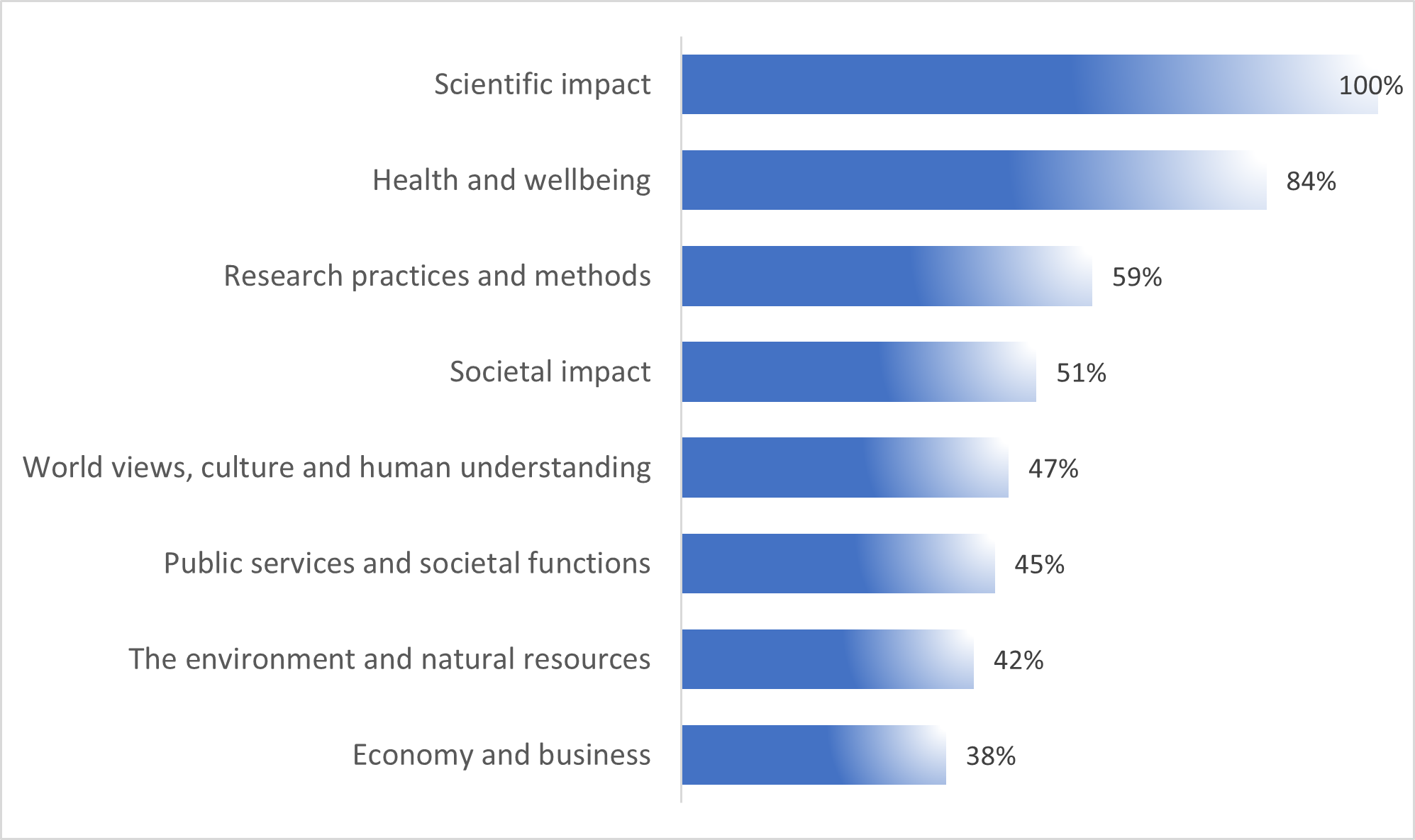
High-quality biosciences, health and environmental research continues despite Covid-19
The Covid-19 pandemic shows in the research projects in biosciences, health and the environment that submitted their final reports to the Academy in May 2022. However, the results of the reports demonstrate scientific impact, effectiveness and renewability that are both internationally competitive and scientifically excellent, and that fall well within the Research Council’s policies.
The Research Council for Biosciences, Health and the Environment receives around 900 applications annually, of which 17% receive funding. 170 final reports were submitted to the Research Council in 2022. The research projects that submitted their final reports were carried out mainly during 2016–2021, with 60.4 million euros of research funding used overall.
The number of doctoral degrees, master’s degrees and scientific publications, and the volume of international collaboration, clearly indicate the scientific effect and impact of the projects and the utilisation of knowledge and skills.
On average, each project resulted in two doctorates, licentiates or master’s degrees. The number remained more or less the same compared to recent years. The number of scientific degrees has clearly increased in all funding instruments compared to the projects that submitted their final reports in 2021.
In May 2022, when the final reports were submitted, many reports described that the degrees were to be completed later in 2022 or early 2023. The delay in completions was strongly based on the outbreak of the Covid-19 pandemic, which shut down units at universities and departments and halted all work
Publication numbers and societal impact on the rise
Researchers’ success in spreading new knowledge and maintaining quality is demonstrated by the significant increase in the number of publications in the completed research projects. Both the effectiveness of the researchers and research groups and the transfer of knowledge are also reflected in how well the project succeeds in its impact in society. The research projects had strong networks both within the scientific community and beyond.
The number of peer-reviewed scientific publications increased to some degree in all funding instruments compared to the previous year. 66% of the publications were open access (OA), which was only slightly more than in 2021 (65%), but significantly more than in 2020 (57%), which shows a continuous upward trend.
Figure 1: Publications by funding instrument in studies funded in 2016–2021. Original article (A1), review article (A2) and open access publications (OA).
| Funding instrument | Final reports (pcs) | A1 and A2 publications (pcs) | Share of OA publications in A1 and A2 publications (pcs) | Percentage of OA publications | Publications on average per study |
| Academy Project | 80 | 1,369 | 899 | 66 | 17 |
| Clinical Researcher | 11 | 112 | 75 | 67 | 10 |
| Academy Research Fellow | 16 | 265 | 161 | 61 | 17 |
| Postdoctoral Researcher | 26 | 175 | 132 | 75 | 7 |
| Total (change in % compared to 2021) | 133 (13 %) |
1,921 (3 %) |
1,267 (4 %) |
67 (2 %) |
14 (-10 %) |
International collaboration and mobility are essential to cutting-edge research
Promoting the renewal and diversity of science was implemented in international research and collaboration. International collaboration within research projects increased considerably compared to the previous year. Supporting the projects’ international reach and the independence of young researchers as well as reinforcing the careers of promising researchers were emphasised in the decision criteria in the Research Council’s research policies.
Finnish leading-edge researchers have collaborators all around the globe within the field of biosciences, health and the environment: most often in the Nordic countries, Central and Southern Europe and the United States.
However, in 2020, the Covid-19 pandemic quickly halted all mobility. This was especially evident in the final reports of clinical research projects, where nearly half of the studies had to cancel all intended mobility. In many other projects, research visits that had already begun had to be suspended immediately.
The final reports describe how the projects used flexible solutions to navigate practical problems concerning mobility during the pandemic. In some studies, international mobility was rather seamlessly replaced with internet communication or video conferences between the researchers. In others, research results produced in another country could be mailed to Finland, which enabled further analysis of the results.
Scientific publications and active communication promote research
Nearly 90% of the studies had steady communications with scientific communities both abroad and in Finland. Communications and collaboration with research groups within the projects’ respective fields grew significantly. The projects also contacted other scientific communities. In the previous year, this was significantly less frequent: it was present in only 62% of completed studies.
Popularised research-based information and scientific visibility are increasing in many media outlets.
The final reports indicated that researchers actively gave media interviews not only for national, but also international TV and radio stations. Additionally, researchers published texts in various newspapers and magazines, blogging platforms, and websites. YouTube videos were another way of making research accessible to citizens. A more traditional way to disseminate knowledge were presentations at organisations and lectures or courses at adult education centres, still in use in research projects. Communicating about the outbreak of the Covid-19 pandemic increased experts’ remote visits in schools and regional communication channels within the field of biosciences, health and the environment.
Research benefits the whole society
Researchers promote the interconnections between impactful high-quality research, the scientific community and the society at large. Scientific impact was carried out in various ways in all studies that submitted their final report. In over 80% of all funding instruments (Academy Project, Academy Research Fellow, Postdoctoral Researcher, Clinical Researcher), the research also had impact on health and wellbeing. In around half of the studies, the impact of the research results was connected evenly with research methods, societal impact and world views, culture and human understanding. Additionally, science was clearly connected with public services and societal functions, the environment and natural resources and economy and business.
Figure 1. Various manifestations of scientific impact with reported percentages in the projects within the field of biosciences, health and the environment that were completed in 2021.

High-quality Finnish research successfully continued in nearly 90% of the research projects that submitted their final report, either in the same research group or within a new project. Research continuity is strong in all funding instruments.
Researchers must submit a report
The PI of an Academy-funded project must report on the completed study, its research results, and its wider impact to the Academy of Finland. In accordance with the Finnish Act on Discretionary Government Transfers, the Academy must make sure that the funding is used for the purpose it was granted. This year, the final reports must be submitted on 1 June 2023 at the latest.
The final report is an important way of demonstrating the research quality, impact and renewal of completed studies. Final reports may also be used to monitor how effective the project has been. The analysis of final reports demonstrates how well the science policy principles of the Academy are realised. The data may be used in the aims and development for upcoming calls.